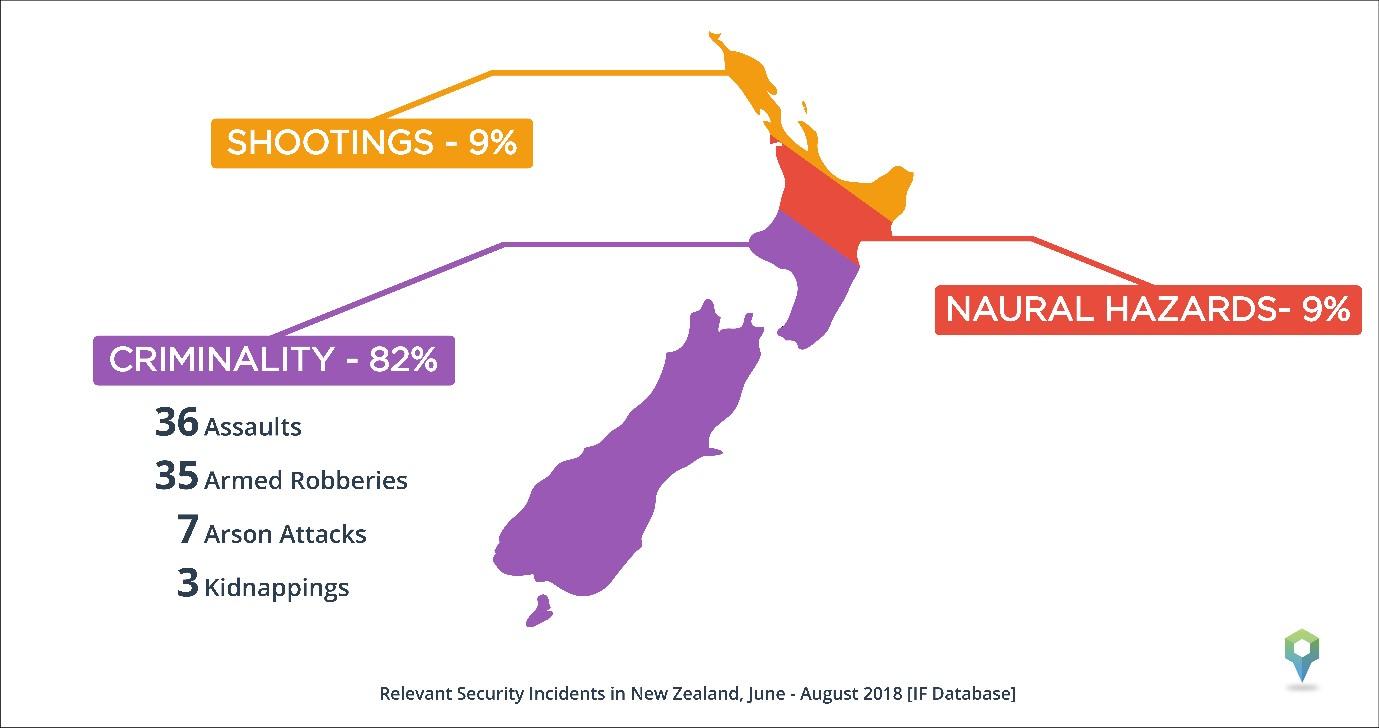The Enduring Challenge of Gang Crime in New Zealand
While the security landscape appears to be stable and relatively unchallenging, the issue of gang crime in New Zealand periodically hits the news, highlighting the recurrence of the problem as well as the lack of law enforcement strategies to address this challenge.

Gangs in New Zealand assume the form of violent groups predominantly engaged in low-level criminality and local narcotics distribution. Criminal groups appear to be relatively independent, lacking an overall nation-wide cooperation. Even the major gangs – Mongrel Mob, Black Power and Red Devils – are divided into local “chapters”, independent sub-groups carrying out operations in their area.
This structure offers more flexibility and freedom of criminal operations, allowing local gangs to quickly relocate in different towns if they lose the support of the local population or face relevant disruption of their activities by police intervention. The Barbarian Stormtrooper group is currently following this dynamic, relocating in the South Waitaki area of the Southern Island, after multiple police operations in their home city of Christchurch.
Major gang-related incidents in Christchurch and Barbarian Stormtrooper relocation in Oamaru [June-August 2018]
Despite this lack of a country-wide organization and of major criminal operations, criminal gangs constitute an enduring challenge for authorities. In the period from June to August 2018, over 35% of the incidents recorded related to gangs’ activities. Most of such incidents occurred in the major urban centres of Auckland, Hamilton and Hastings, in the Northern Island. In Hastings in particular, a strong presence of gang members in its suburbs directly impacted residents’ life: throughout the winter at least four people were assaulted on the streets for verbally confronting the criminals or for the mere fact of crossing their path.
Major gang-related incidents in Hastings [June-August 2018]
Overall across the Northern Island, gangs in New Zealand stress their control over an area through street shootings. The practice (used also by mafia families in Southern Italy) involves firing gunshots in the air or against cars and properties to stress the gang total control over the district. From the Glen Ines and Henderson districts in Auckland, to Mahora, in Hastings, gunshots have been fired against parked cars and private houses.
Only on two occasions in the period considered such gunshots were deliberately targeted against specific buildings. In the first case, unknown individuals opened fire at night against a police station in Te Araroa. In the second, intimidatory gunshots were fired against a private house in South Dunedin.
Major gang-related gunshots across the Northern Island [June-August 2018]
These frequent shootouts have predominantly a symbolic and intimidatory value rather than being real street conflicts. For this reason, inter-gangs’ killings occur more rarely. On August 21st however, a high-ranking member of the Mongrel Mob gang was allegedly murdered by members of the rival Black Power group. The reaction to the incident did however differ from the usually observed dynamics between criminal groups in other countries. Rather than triggering a full-scale feud between the gangs, members from both sides appeared to be willing to cooperate with authorities. Concurrently, a harsh response from police forces led to the arrest of a dozen gang members within a few hours from the incident.
Mongrel Mob member homicide and police response in Whanganui [June-August 2018]
Although such violent incidents are rare and quickly addressed by police to avoid escalations, gang—related criminality continues to constitute a relevant problem in the country. Assaults, armed robberies and street shootings increase the sense of insecurity in rural neighbourhoods and in cities peripheries, creating a vicious circle as local youth join gangs seeking protection and status. Member of the Tribal Huk gang have been effectively exploiting these fears by staging a violent member de-patching (expulsion from the group) in the city of Ngaruawahia, while taking part in community activities (i.e. free lunch distribution in school, engaging with young people in local youth centres) to recruit new members.
Gangs in New Zeland also impact tourism. On August 20th, a couple of Colombian tourists were robbed at gunpoint along a remote road in the Turangi area, while on August 16th surfers were targeted with gunshots in the Kawhia Harbour.
Gang-related incidents against tourists [June-August 2018]
Gang crime in New Zealand is likely to continue being a relevant problem. Although it is unlikely that they will significantly erode the security landscape of the country, a more comprehensive prevention work is needed to contrast the phenomenon. The locality of gangs offers authorities the opportunity to closely monitor their actions and prevent violent incidents. Concurrently, community engagement practices may lead to early reporting of criminal activities such as narcotics distribution, allowing police forces to promptly intervene even in more rural areas, where gangs´ presence is stronger due the low presence of law-enforcement personnel.
Report written by Daniele Liberatori